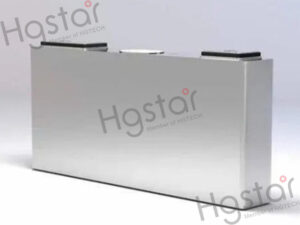現在、電池技術の応用として、パワー電池とエネルギー貯蔵電池の2つの可能性があります。 パワーバッテリーは新エネルギー自動車に属し、エネルギー貯蔵用バッテリーは太陽光発電などの機器に対応する。
パワー電池のパックには、円筒形、角型、ソフトパックの3種類がある。 ソフトパック電池は、従来、モバイル機器向けが主流でしたが、体積制御が可能なことから、特にプラグインハイブリッド車向けの車載用電池として、自動車メーカーに採用が検討されています。 重量や体積を考えると、ソフトパックバッテリーのメリットは明らかです。

レーザーは、集束エネルギー、高い溶接効率、高い加工精度、大きな溶接シームアスペクト比などの利点から、電源電池の銅-アルミ溶接や、電気メッキのニッケル-銅材溶接ができる唯一の技術となっています。 溶接方法と手順を賢く選択することが、電池のコスト、品質、安全性、均一性に直接影響します。
パウチ電池の異種材料溶接
主に正極ラグと負極ラグの直列接続、正極ラグと銅バスバーの溶接、負極アルミと銅バスバーの多層溶接を行い、ソフトパック電池の異種材料の溶接を行うものです。 銅タブの厚さは通常0.2~0.5mm、アルミタブの厚さは通常0.2~0.6mmです。
ソフトパック電池用銅-アルミ合金のレーザー溶接で最も苦労した点
銅とアルミニウムは融点が大きく異なるため、液体では互いに無限大に溶けるが、固体では相互の溶解度が制限され、金属間化合物に基づく様々な固溶体相を生成することができる。 そのため、溶接を行う際には、許容できるビーム品質の光源を使用し、入熱を最小限にするように心がけてください。 銅が液体アルミニウムに触れる時間を短くすることで、2つの金属間化合物の生成を抑え、溶接接合部の強度を向上させる。
レーザー溶接プロセスの難しさ
高反射/熱伝導性材料は、高いレーザー出力密度、高い溶接反射率、および厳しいレーザー安定性と信頼性の基準を必要とします。炭素含有量の多い材料 – 炭素含有量が 0.77 % を超えると、レーザーの高速冷却と高速加熱の特性により、溶接の中心部と熱影響部にクラックが発生しやすくなります。低沸点元素を含む材料 – Mg、Zn などを含む材料 これらの材料のイオン化エネルギーが低いと、レーザー溶接プロセス中に相当量の蒸発が起こり、さらに容量を吸収してプラズマ化し、溶接部のミクロ構造の種類と化学組成が変化して溶接性能が大きく損なわれてしまいます。






